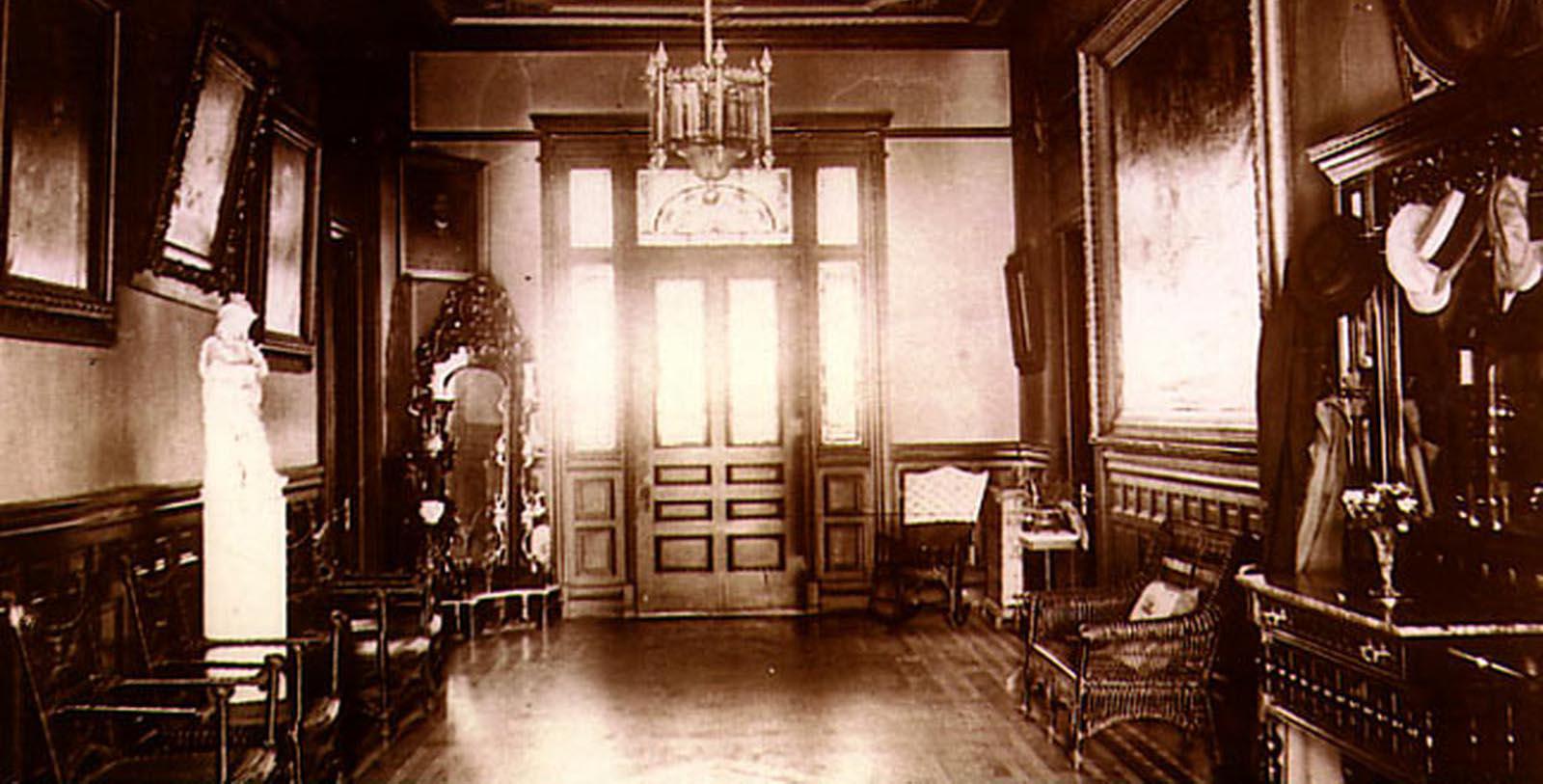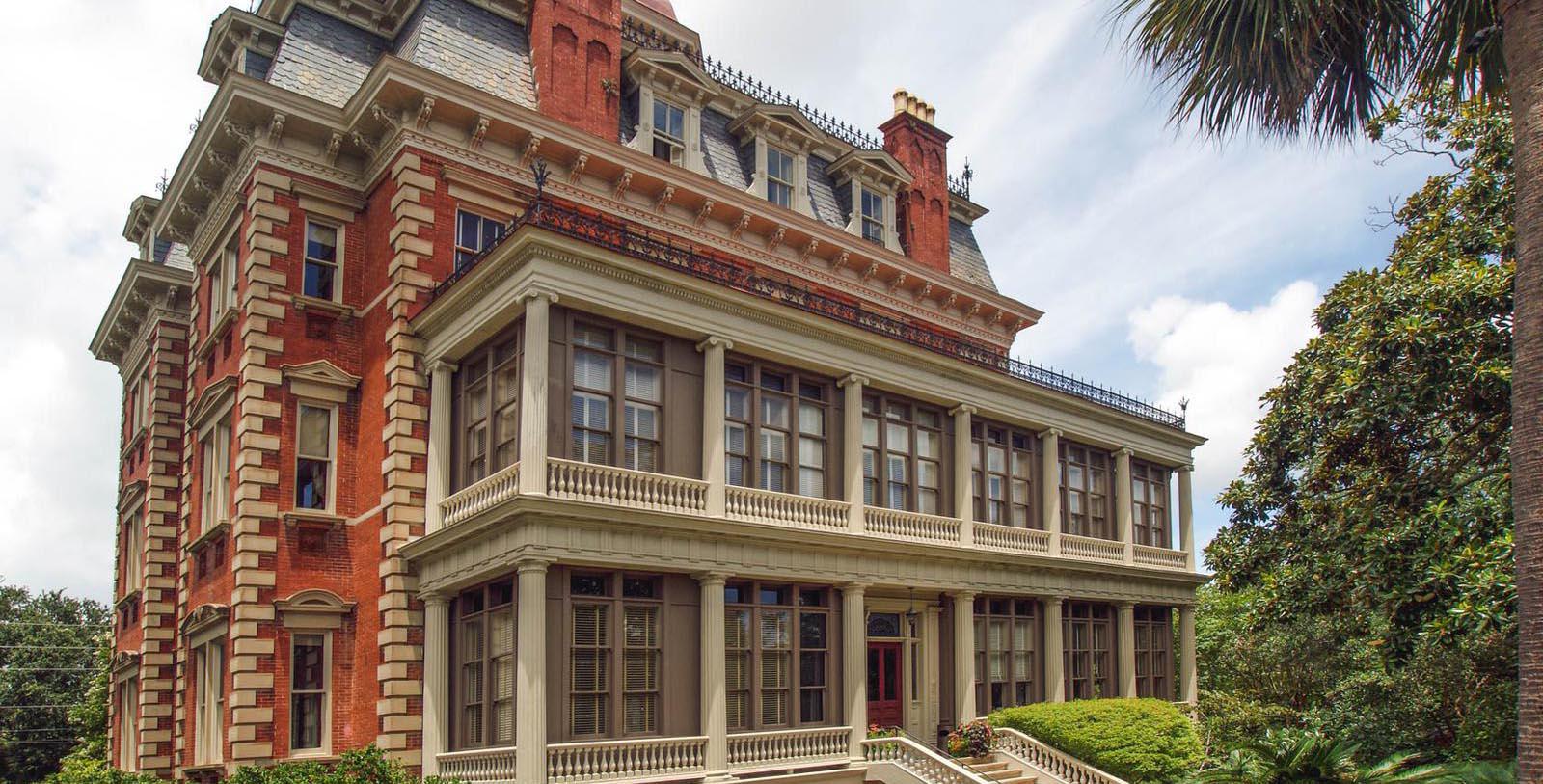Receive for Free - Discover & Explore eNewsletter monthly with advance notice of special offers, packages, and insider savings from 10% - 30% off Best Available Rates at selected hotels.
wentworth mansion history
Discover Wentworth Mansion, built in 1886 as a private residence for wealthy cotton merchant, Francis Silas Rodgers.
Wentworth Mansion, a member of Historic Hotels of America since 2003, dates back to 1886.
VIEW TIMELINEWentworth Mansion is among the most iconic contributing structures within the Charleston Historic District, now a popular National Historic Landmark. Completed at the height of the Gilded Age, the Wentworth Mansion was once the private residence for a wealthy cotton merchant named Francis Silas Rodgers. Rodgers himself had a massive family consisting of 13 children and desired to create a stunning estate in the heart of Charleston that would cater to them all. He subsequently acquired a large plot of land at the intersection of Smith and Wentworth Streets, hoping that the space would enable the creation of a sprawling manor on a rectangular floorplan. He then hired the accomplished Daniel G. Wayne to design his new home, which the latter began building in 1881. At a cost of $200,000, Wayne crafted a beautiful mansion that featured some of the best Second Empire architectural aesthetics in the entire city. The structure was massive, standing four stories tall and measuring 24,000 sq. ft. in size. Many awe-inspiring architectural details proliferated inside the mansion, too, including Philadelphia pressed brick and Tiffany stained-glass windows. Some were particularly ornate, such as the custom chandeliers the team had imported from Europe and the marble fireplaces created by sculptor Emile T. Viett. Wayne even created a bas-relief cornice above the dining room window depicting a cotton plant, emblematic of Rodgers' business. Perhaps the most defining element of the building’s whole appearance was the iconic mansard roof and its large cupola that afforded unrivaled views of Charleston’s downtown neighborhoods.
When construction on Rodgers’ beautiful mansion concluded in 1886, it stood as one of the most defining landmarks in Charleston. The spectacular structure remained within the family for the next several decades, passing on to Rodgers’ descendants after his death in 1911. But the new generation of owners found running the estate difficult, for its upkeep and labor costs proved to be considerably great. (The mansion employed a number of servants, who lived in a three-story dormitory inside the eastern wing.) The Rodgers family eventually decided to part with beloved home, reaching a deal to sell the structure to the Scottish Rite Cathedral Association in 1920. Then, approximately two decades later, the organization turned over its control of the erstwhile mansion to the Atlantic Coast Life Insurance Company. Fortunately, the historic Rodgers mansion received a new lease on life after Richard Widman—the president of Charming Inns—acquired the site in 1997. He subsequently initiated a comprehensive, 18-month-long renovation that transformed the building into a magnificent boutique hotel called the “Wentworth Mansion.” Nevertheless, the work had also thoroughly focused on revitalizing the building’s terrific historical architecture, restoring it back to its former glory. Today, the Wentworth Mansion still serves as one of Charleston’s most celebrated historic hotels. Its gorgeously preserved architecture, fantastic on-site restaurants, and upscale accommodations continues to attract countless cultural heritage travelers from across the nation.
-
About the Location +
Named after King Charles II of England, Charleston is among the most historic cities in the whole United States. The first settlers to found the city arrived back in the mid-17th century, when the Lords Proprietors—the original officers for the unsettled Carolina territory—began moving colonists from Barbados and Bermuda to the area. Intent on creating a town as quickly as possible, the Lords Proprietors selected a number of sites around the confluence of the Ashley and Cooper rivers, before finally finding success at a place called “Oyster Point” in 1672. Despite intending to develop the settlement around a visionary plan known as the “Grand Model,” “Charles Towne”—as it was called then—was never incorporated until the American Revolution had ended. Instead, city officials passed local ordinances in the form of municipal laws that attempted to give some kind of legitimacy to the nascent community. Nevertheless, life in early Charleston was incredibly tough, as the town was beset by hostile groups of French, Spanish, and Native American armies. Pirates posed a serious problem, too, who raided the coastline frequently. In fact, Edward Teach—remembered today as “Blackbeard”—was among the pirates to harass Charleston regularly at the time. Furthermore, malaria and other tropical diseases took their toll on the English colonists, as did natural weather phenomenon like hurricanes.
Growth only picked up once immigrant populations from Europe began expanding westward into the South Carolina interior. Their arrival also saw the city’s economic fortunes change significantly, as it rapidly emerged as a commercial port for the outlying farms that surrounded Charleston. Rice, indigo, and other cash crops were common exports transported into Charleston’s natural harbor, which helped make the city one of the most prosperous in the Thirteen Colonies. But the new maritime commerce had a considerable dark side, for the transatlantic slave trade had also played a role in Charleston’s rebirth. By the eve of the American Revolution, nearly half of the city’s population—some 11,000 people—were either enslaved Africans or their descendants. Still, Charleston’s size and prosperity as a port made it one of the largest cities in British America, as well as the principal point of entry for any person—free or enslaved—entering into the South.
Charleston remained a busy port even as Great Britain continuously targeted the city throughout the American Revolutionary War. The city itself was eventually captured after British general Sir Henry Clinton successfully subjected it to a prolonged siege in 1780. Still, even greater economic prosperity awaited Charleston once Eli Whitney’s cotton gin made the cultivation of cotton an incredibly lucrative endeavor for local planters. Cotton soon became the primary staple crop shipped through Charleston Harbor right up to mid-19th century. But the number of slaves transported into the city increased dramatically, too. The local devotion to slavery made the city’s white residents committed to the concept of southern secession—an idea that became reality when South Carolina’s state legislature voted to secede following Abraham Lincoln’s first election in 1860. Charleston soon found itself at the middle of the American Civil War that followed, with the first shots of the conflict fired right within its own borders. Rebel militia under the command of P.G.T. Beauregard specifically bombarded the U.S. Army-occupied Fort Sumter shortly after Lincoln’s call for volunteers in April 1861. Four years of constant warfare came in the wake of the attack, which eventually destroyed much of Charleston and the rest of South Carolina.
Charleston struggled to emerge from the conflict, as industrialists and other entrepreneurs chose to move their operations elsewhere. But in the early 20th century, Charleston underwent a significant cultural renaissance that sought to highlight the positive aspects of the city’s history and culture. New art and literature appeared throughout Charleston, while many historic structures were preserved for the first time. Race relations also began to improve, with local African Americans gradually gaining access to more rights and liberties by mid-century. Charleston now rates among America’s most diverse communities, as well as one of its most culturally vibrant. People today love traveling to the city to experience its many interesting historic sites, such as Fort Sumter, the Historic Charleston City Market, and Magnolia Plantation and Gardens. But visitors also adore the wealth of historical architecture that calls Charleston home, giving it an incredibly gorgeous landscape. Many of those aesthetics—ranging from Greek Revival to Federal—reside within famous neighborhoods like the renowned Charleston Historic District. The Charleston Historic District was even designated a U.S. National Landmark by the U.S. Secretary of the Interior in 1966!
-
About the Architecture +
When cotton merchant Francis Silas Rodgers designed the future Wentworth Mansion in 1886, he chose the French-inspired Second Empire-style architecture to influence its final appearance. Also known simply as “mansard style,” Second Empire architecture first emerged in Paris at the height of the reign of Emperor Napoléon III. Born Charles-Louis Napoléon Bonaparte, he was the nephew of the legendary Napoléon Bonaparte of the French Revolution. He rose to power by serving as France’s president before making himself its monarch by the middle of the 1800s. Nevertheless, his reign saw a brief restoration in French national pride that was accompanied by a cultural renaissance that affected everything from the arts to the sciences. One the areas that saw this development was architecture. Napoléon III had taken a particular interest with architectural projects at the time, going as far as to commission the complete redesign of Paris’ central cityscape. He subsequently appointed engineer Georges-Eugène Haussmann for the project, instructing the latter to create a new generation of buildings that could accommodate the city’s swelling population. Largely borrowing design elements from the French Renaissance of the 16th century, Haussmann essentially created a brand-new architectural form that soon defined the appearance of Paris. While the project itself only lasted from 1853 to 1870, its impact was felt throughout the world for many years thereafter. Haussmann’s new form quickly appeared across France, as well as many other countries throughout Europe, including Belgium, Austria, and England. Furthermore, the architecture quickly emerged in North America, finding a popular audience in both the United States and Canada. Many hoteliers like Frank Jones saw the fabulous design aesthetics of Second Empire architecture and copied it for their own structures throughout the remainder of the 19th century.
Second Empire architecture was specifically meant for larger structures that could easily showcase its ornate features and grandiose materials. Architects, business owners and other professionals who embraced the form believed that it represented the best of modernity and human progress. This idea especially found an audience in the America, where society was largely perceived to be on an upward path of collective mobility. (In fact, the architecture had become so enmeshed in American society that some took to calling it “General Grant” style.) The form looked similar to the equally popular Italianate-style, in which it embraced an asymmetrical floor plan that was rooted to either a “U” or “L” shaped foundation. The buildings usually stood two to three stories, although some commercial structures—like hotels—exceeded that threshold. Large ornate windows proliferated across the facade, while a brilliant warp-around porch occasionally functioned as the main entry point. The porches would also have several outstanding columns, designed to appear smooth in appearance. Every window and doorway featured decorative brackets that typically sat underneath lavish cornices and overhanging eaves. Gorgeous towers known and cupolas typically resided toward the top of the building, too. Yet, Second Empire architecture broke from Italianate in one major way—the appearance of the roof. Architects always incorporated a mansard-style roof onto the building, which consisted of a four-sided, gambrel-style structure that was divided among two different slopes. Set at a much longer, steeper angle than the first, the second slope often contained many beautiful dormer windows. The mansard roof became a central component to Second Empire architecture after Georges-Eugène Haussmann and his fellow French architects starting using it for their own designs. They had specifically sought to copy the mansard roof of The Louvre, which the renowned François Mansart had created back at the height of the French Renaissance.































